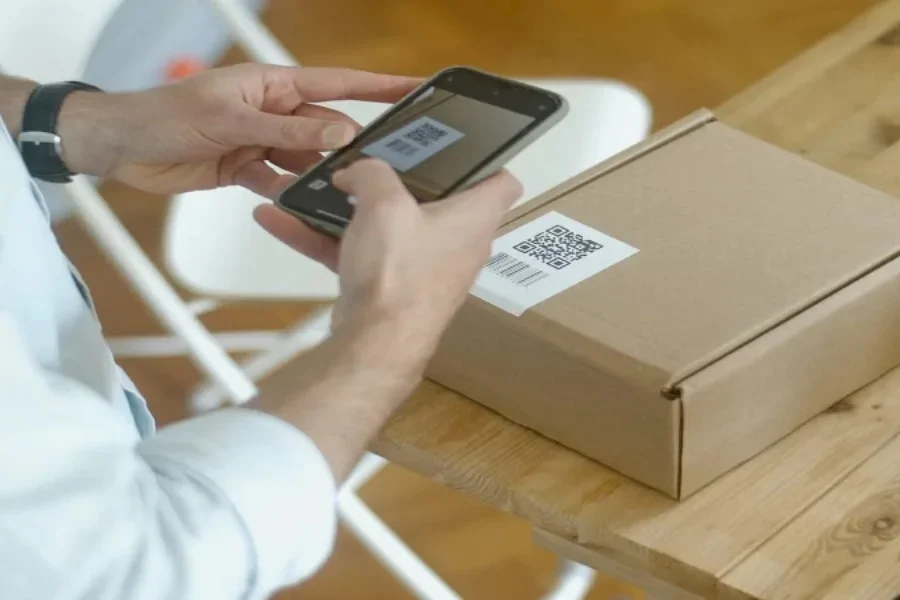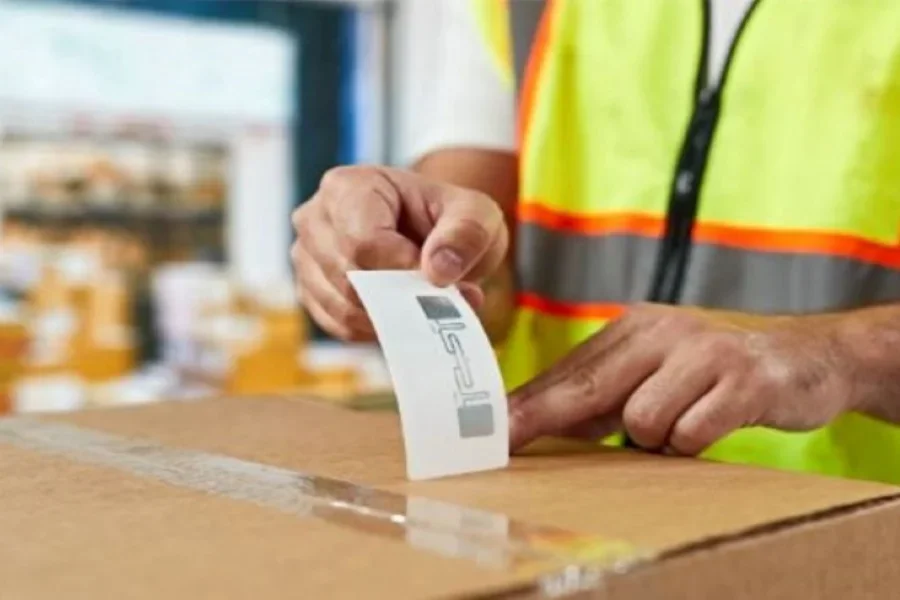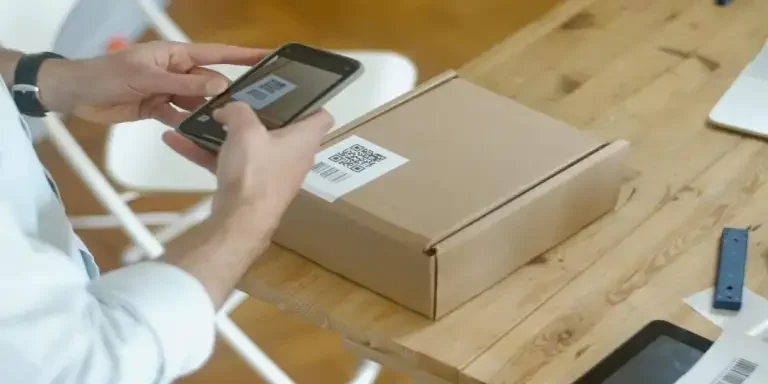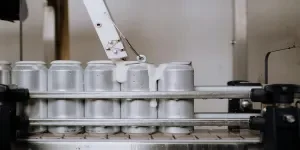Recent years have seen an increase in integrating advanced technologies, such as sensors, into packaging solutions to develop smart packaging. This innovation is transforming supply chains, improving product integrity, safety, and quality, and enhancing the overall customer experience.
These intelligent technologies are becoming popular in eCommerce, as well as for industrial goods and consumer packaged goods. With this rapid growth in demand for smart packaging, businesses can leverage these innovations to tap into this growing market and increase competitiveness and performance.
Table of Contents
An overview of the global smart packaging industry
Types of smart packaging
Emerging trends and technologies in smart packaging
Industries with high demand for smart packaging
Conclusion
An overview of the global smart packaging industry
Businesses are increasingly recognizing the potential of smart packaging in improving and preserving the quality of their products. For instance, using technologies such as sensors helps gather data, which is saved and analyzed to acquire critical insights such as product quality that facilitate appropriate improvements. In addition, companies are increasingly leveraging smart packaging to comply with strict national and international labeling standards. These opportunities have led to rapid smart packaging market growth.
Smart packaging market potential and size
The smart packaging market size was valued at US$ 41.55 billion in 2022 and is projected to reach US$ 63.25 billion in 2030, growing at a compound annual growth rate (CAGR) of 5.39%. In 2022, the smart packaging industry accounted for 2% of the US$ 900 billion packaging industry, projected to grow to 5% by 2030. These statistics reflect an opportunity for businesses to leverage the industry’s potential and the likelihood of an increase in demand for smart packaging.
With the increased competition in local and international markets, smart packaging is rapidly becoming a holistic solution that is transforming how businesses deliver, sell, and use products. Companies in various industries, such as food, cosmetics, and pharmaceuticals, have adopted smart packaging solutions.
Factors driving smart packaging market growth
Multiple factors are driving the demand for smart packaging materials and industry growth. These include:
- Changing consumer lifestyles and demands
The smart packaging market growth is associated with ongoing urbanization and increased use of personal products with advanced integrated innovation. Besides this, modern customers are more health-conscious and curious about the packaging of the meals they eat. This means brands can leverage smart packaging features such as QR codes to enhance customer access to product information.
In places like North America, which is projected to hold up to 26% of value share by 2031, the demand for smart packaging is driven by the desire to reduce food waste through utilizing the advanced technologies that drive smart packaging.
- Demand for temperature-controlled packaging solutions
Industries such as food, beverage, and pharmaceutical companies are looking for temperature-controlled packaging solutions to help monitor and maintain products’ freshness. This application of smart packaging has increasingly fueled demand and market growth.
- Developments in the printing processes
Printing technologies have shown improved functionality in processing and presenting information, enabling brands to connect and communicate with target customers. For example, the improved ability to print QR codes on paper and other surfaces makes the benefits of these innovations more accessible to retailers.
Types of smart packaging
Connected packaging
Brands use connected packaging to “connect” with their customers. It integrates technology such as tags, QR codes, and sensors that collect third-party data for consumer behavior analysis. As a result, it transforms packaging into interactive brand tools and creates meaningful experiences. An example of connected packaging is when a customer can scan a QR code and land on the company’s website or app portal, where they access other media, such as videos demonstrating product usage.
Active packaging
Active packaging employs technologies that help release or absorb compounds from the food or the headspace of food packaging. It integrates advanced technologies to provide functionality like temperature, thermochromic, moisture, or bacteria control, thus helping companies increase product shelf life and quality by stalling the degradative reactions.
Design-led packaging
Design-led packaging is a form of packaging that enhances the function and structure of a product to improve user experience and value perception. It prioritizes an innovative physical package design to appeal to target customers.
Intelligent packaging
Intelligent packaging incorporates smart, interactive, and connected packaging solutions. The technologies integrated into this packaging facilitate various activities, including collecting data, tracking and tracing products, and detecting potential problems. It diagnoses product conditions using indicators and sensors placed inside or outside the packaging. Examples of conditions diagnosed include freshness, temperature, tightness, and storage time.
Emerging trends and technologies in smart packaging

Augmented reality (AR) in smart packaging
Augmented reality (AR) changes how customers interact with product packaging by enabling brands to combine physical and virtual reality. It helps companies relay packaging information through 3D content, leading audiences to the digital world and increasing opportunities for higher engagement.
To maximize the potential of AR-based smart packaging, brands are exploring various content options, including:
- Text
- Graphics
- Interactive games
- Videos
- Animation
QR codes in smart packaging

With the advanced functionalities in most smartphones today, it has become easy for customers to read QR codes as long as the phone has a camera and internet access. This ease of use has hugely contributed to the increased adoption of QR codes in smart packaging. For instance, a quick scan can lead customers to a company website for more information about the product or marketing initiatives, including gifts and prizes to keep the customer engaged. Besides this, QR codes enable businesses to track products and maintain visibility throughout the supply chain.
An example of a successful case of QR codes is Kellogg’s use of coding technology in cereal boxes. The company rolled out Coco Pops boxes fitted with NaviLens technology, a type of printed code that enabled blind and partially sighted customers to use smartphones to detect and playback labeling and allergen information.
RFID sensors in smart packaging

RFID sensors are integrated into smart packaging to enhance product monitoring and sensing capabilities. These technologies help transmit data over long distances, enabling tracking during shipping. In addition, RFID tags and smart labels can be used to alert users when products have been subjected to harmful conditions, such as when exposed to bad weather conditions, making them inedible.
Industries with high demand for smart packaging
The Food, beverage, and healthcare industries are leading in demand and adoption of smart packaging. They are estimated to hold the largest market share, projected to be 69% by 2031. This demand is primarily propelled by the strict storage and transportation standards for various food and healthcare products.
In addition, smart packaging in the food and beverage industry has become a key to reducing costs, minimizing waste, and maintaining quality standards. Manufacturers are using the smart packaging technologies to uphold quality standards, control temperatures, and ensure product safety, thus reducing food waste. Similarly, smart packaging in the health and high-end consumer goods sector is increasingly becoming popular due to improved communication, product security, and higher access to product or brand information.
Conclusion
The smart packaging industry is rapidly growing, with businesses embracing packaging solutions that enhance product protection, quality, shelf life, and customer experience. Companies aiming to strengthen their competitiveness in the packaging industry should embrace these smart packaging technologies, such as AR, QR codes, and RFID sensors. They can also target industries with high demand and the use of smart packaging solutions, such as food, beverage, and healthcare, to reap early benefits.




